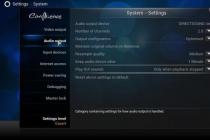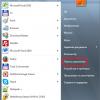In 2016, Samsung launched one of the smallest devices on the smartphone market: the 4-inch Samsung Galaxy J1 mini. In addition, the J1 mini is the cheapest smartphone from the manufacturer, with a price tag of around 80 USD at the time of writing.
This model has another name - Galaxy J1 Nxt mini, but it appears mainly in other countries. In this review, we will try to figure out what this device is.
In 2016, other devices followed, reviews of which you can find here:,,,.
Characteristics Samsung Galaxy J1 mini SM-J105H
The technical part of the smartphone is very modest by the standards of 2016.
Design
The appearance of the device is very simple, no frills. With a high probability, it can be argued that earlier budget models were taken as the basis for the design. There are 3 color variations available: black, white, gold. The product is made of matte plastic, the frame is made of metal, which is very pleasing and distinguishes the J 2016 series from last year. We had a gold color and the plastic had a pearlescent tint. The design is collapsible, the battery can also be removed. The case is 121.6 mm high, 63.1 mm wide and 10.8 mm thick. Such a "well-fed" device, but thanks to this, it lies more confidently in the hand, given the small width and height.
CPU
4- nuclear processor Spreadtrum SC8830 (1.2 GHz). The graphics are processed by the Mali-400 MP2 video chip. The solution is budgetary, but, in general, it is enough for work. In the interface, there are no noticeable problems with the speed of work, as well as delays in the work of applications.
The smartphone can run demanding 3D games, but it is not suitable as an affordable gaming solution due to the small screen. Demanding games like Asphalt 8 and Modern Combat 5, surprisingly, run smoothly, but at the smallest graphics settings. Even on small screen in games, pixels are visible, straight lines have turned into a ladder.

Memory
The built-in memory is 8 GB, of which a little less than 4 GB is available to the user. This volume is enough to install common applications. Interestingly, a microSD card with a capacity of up to 128 GB can be installed in the memory card slot: as a rule, this is not yet found in state employees. This feature makes the Samsung Galaxy J1 mini an excellent candidate for MP3 player and voice recorder replacement. After all, this volume is more than enough to store a solid collection of music tracks.
But with the RAM, not everything is so much fun. Its volume is only 768 MB, while the generally accepted standard in modern budget devices is 1 GB of RAM. 
Battery
The battery in this smartphone is modest: only 1500 mAh. But given the specifics of such devices, they are usually not used for games, watching movies and surfing the net. Therefore, the energy consumption is more gentle. The classic scenario for using such a smartphone is calls, SMS, and occasionally social networks, listening to music from time to time, calculator and alarm clock as needed. In this mode, he will calmly hold out for one day, perhaps up to two days. It all depends on the intensity of use.
Also, the situation is partially saved by the "Maximum energy saving mode". When activated, it automatically dims the screen backlight, optimizes performance running applications, and restricts their hibernation network access.
Camera
The smartphone has 2 cameras, but here they are most likely for show. The main one is completely lacking such basic features as autofocus and flash. As for its level in daylight, it shoots tolerably well, but without autofocus it is very difficult to get a more or less clear picture of text. There are settings in the camera, and they are most likely for show. Having selected the "Sport" mode, the following picture was obtained on the main camera:

Click on image for full size
And below is a photo without the "Sports" mode. There is not much difference. 
Well, a shot with the main camera close up, with sufficient lighting:

The maximum video recording resolution is HD (1280 x 720), it is recorded at a frequency of 30 frames / s.
Front-camera 0.3 Mp is even worse, but it will do for video calls.
Will take a photo on the front camera: 
Display
The diagonal of the display is only 4 inches. V recent times this is a great rarity, and buyers can and would like to purchase a modern compact device for calls and work, but the choice is small. With a modest diagonal, the resolution is 480 x 800 pixels, but this device does not need more. The pixel density is 240 ppi, which is very low. Individual pixels can be seen. if you look closely.
The display itself is the most budgetary one and is made using TFT technology. The viewing angles are small, so if you look not at a right angle, but at least slightly to the side, the colors will darken a lot.
The reserve of brightness is enough for comfortable use indoors, as well as in places where direct sunlight does not fall.
Network communications
The smartphone is two-SIM, both slots are designed for Micro-SIM cards. One SIM can work in 2G networks, the second in 3G. Wi-Fi and Bluetooth modules are present, the device can be used as a pocket portable access point. Navigation presented GPS support and GLONASS.
The manufacturer saved on the proximity sensor, but there is a software solution that locks the screen when you call (the screen stays on when you call). To unlock the screen during a call, you need to tap on it twice. You can accidentally, with your ear or cheek, unlock and open the notification shade, turn on Bluetooth or other functions. This is in theory and according to reviews on the network, in practice it was not possible to unlock the screen with the ear.
Sound
The hole for the main audio speaker is on the back panel near the camera. The maximum volume is sufficient to hear a call in a not particularly noisy place. There are no complaints about the quality and volume of the spoken dynamics.
Operating system
The OS is Android 5.1 Lollipop. The system is not overloaded with unnecessary elements, the shell is quite simple, so it does not slow down. There are no plans to upgrade to Android 6, but Android 5.1 is enough for this device, and even earlier versions of OS would be enough.
Pros and cons of Samsung Galaxy J1 mini
Pros:
- compact size due to a small display;
- support for flash drives up to 128 GB;
Minuses:
- poor screen quality;
- the camera lacks flash and autofocus;
Our review Samsung Galaxy J1 mini SM-J105H
The smartphone may be of interest to those who do not need a camera, high performance and at the same time the need for phone conversations without using a headset. Considering the cost, the Samsung Galaxy J1 mini absolutely cannot compete with other low-end devices with the same specs. Yes, it is cheaper than all other smartphones from this manufacturer, but more expensive than its competitors. So Samsung has this device, hope for the brand and so far for the lack of a large number of fresh compact smartphones on the market.
This device is well suited for:
- using instant messengers, if the user has small fingers and he will accurately hit the letters;
- for people who fundamentally like compact smartphones and this is the main criterion for choosing;
- for a child who has this first smartphone;
- for the music lover who is not picky about sound quality. You can install a 128 GB card on the device, which can accommodate many tracks.
It's safe to say that everything that is in this smartphone is budgetary, but it works well without brakes.
Our video review of this smartphone:
Also you will like:
 What a good and inexpensive smartphone? Review of three ultra-budget models
What a good and inexpensive smartphone? Review of three ultra-budget models
 Review of the quad-core smartphone Samsung Galaxy Core Prime G360
Review of the quad-core smartphone Samsung Galaxy Core Prime G360
Information about the brand, model and alternative names of a specific device, if any.
Design
Information about the dimensions and weight of the device, presented in different units of measurement. Used materials, offered colors, certificates.
| Width Width information - refers to the horizontal side of the device in its standard orientation during use. | 63.1 mm (millimeters) 6.31 cm (centimeters) 0.21 ft (feet) 2.48 in (inches) |
| Height Height information - refers to the vertical side of the device in its standard orientation during use. | 121.6 mm (millimeters) 12.16 cm (centimeters) 0.4 ft (feet) 4.79 in (inches) |
| Thickness Information about the thickness of the device in different units measurements. | 10.8 mm (millimeters) 1.08 cm (centimeters) 0.04 ft (feet) 0.43 in (inches) |
| The weight Information about the weight of the device in different units of measurement. | 120 g (grams) 0.26 lbs (pounds) 4.23 oz (ounces) |
| Volume The approximate volume of the device, calculated based on the dimensions provided by the manufacturer. Refers to devices with a rectangular parallelepiped shape. | 82.87 cm³ (cubic centimeters) 5.03 in³ (cubic inches) |
| Colors Information about the colors in which this device is offered for sale. | Black White Golden |
| Materials for the manufacture of the case Materials used for the manufacture of the device body. | Plastic |
SIM card
A SIM card is used in mobile devices to store data that certifies the authenticity of mobile service subscribers.
Mobile networks
A mobile network is a radio system that allows multiple mobile devices to communicate with each other.
Mobile technology and data rates
Communication between devices in mobile networks is carried out using technologies that provide different data transfer rates.
Operating system
An operating system is the system software that controls and coordinates the operation of hardware components in a device.
SoC (System on Chip)
A system on a chip (SoC) integrates all the major hardware components of a mobile device into a single chip.
| SoC (System on Chip) A system on a chip (SoC) integrates various hardware components such as a processor, graphics processor, memory, peripherals, interfaces, etc., as well as the software necessary for their functioning. | Spreadtrum SC8830 |
| Technological process Information about the technological process by which the chip is manufactured. The value in nanometers is half the distance between the elements in the processor. | 28 nm (nanometers) |
| Processor (CPU) The main function of the processor (CPU) of a mobile device is to interpret and execute instructions contained in software applications. | ARM Cortex-A7 |
| Processor size The capacity (bits) of the processor is determined by the size (in bits) of registers, address buses and buses for data. 64-bit processors offer better performance than 32-bit processors, which in turn are more efficient than 16-bit processors. | 32 bit |
| Instruction set architecture Instructions are commands with which the software sets / controls the processor. Information about the instruction set (ISA) that the processor can execute. | ARMv7 |
| Level 1 cache (L1) The cache memory is used by the processor to reduce the time it takes to access more frequently used data and instructions. L1 (level 1) cache is small and much faster than both system memory and other levels of cache. If the processor does not find the requested data in L1, it continues to look for it in the L2 cache. On some processors, this search is performed simultaneously in L1 and L2. | 32 KB + 32 KB (kilobytes) |
| L2 cache L2 (level 2) cache is slower than L1, but instead has a larger capacity to cache more data. It, like L1, is much faster than system memory (RAM). If the processor does not find the requested data in L2, it continues to look for them in L3 cache memory (if available) or in RAM memory. | 512 KB (kilobytes) 0.5 MB (megabytes) |
| Number of processor cores The processor core executes program instructions. There are processors with one, two or more cores. Having more cores increases performance by allowing multiple instructions to execute in parallel. | 4 |
| CPU clock speed The clock speed of a processor describes its speed in cycles per second. It is measured in megahertz (MHz) or gigahertz (GHz). | 1200 MHz (megahertz) |
| Graphics processing unit (GPU) A graphics processing unit (GPU) handles computation for a variety of 2D / 3D graphics applications... In mobile devices, it is most commonly used by games, consumer interfaces, video applications, and more. | ARM Mali-400 MP2 |
| Number of GPU cores Like a processor, a GPU is made up of several working parts called cores. They handle the graphical computation of various applications. | 2 |
| Volume random access memory(RAM) Random access memory (RAM) is used by the operating system and all installed applications. The data that is saved in the RAM is lost after the device is turned off or restarted. | 768 MB (megabytes) |
Built-in memory
Each mobile device has built-in (non-removable) fixed memory.
Memory cards
Memory cards are used in mobile devices to increase the storage space for data.
Screen
The screen of a mobile device is characterized by its technology, resolution, pixel density, diagonal length, color depth, etc.
| Type / technology One of the main characteristics of the screen is the technology by which it is made and on which the image quality of information directly depends. | TFT |
| Diagonal On mobile devices, screen size is expressed in terms of the length of its diagonal, measured in inches. | 4 in (inches) 101.6 mm (millimeters) 10.16 cm (centimeters) |
| Width Approximate screen width | 2.06 in (inches) 52.27 mm (millimeters) 5.23 cm (centimeters) |
| Height Approximate screen height | 3.43 in (inches) 87.12 mm (millimeters) 8.71 cm (centimeters) |
| Aspect ratio The aspect ratio of the long side of the screen to its short side | 1.667:1 5:3 |
| Permission Screen resolution shows the number of pixels horizontally and vertically on the screen. More a high resolution means sharper image detail. | 480 x 800 pixels |
| Pixel density Information about the number of pixels per centimeter or inch of the screen. Higher density allows information to be shown on the screen in clearer detail. | 233 ppi (pixels per inch) 91 ppcm (pixels per centimeter) |
| Color depth Screen color depth reflects the total number of bits used for color components in one pixel. Information about the maximum number of colors that the screen can display. | 18 bit 262144 flowers |
| Screen footprint The approximate percentage of the display area on the front of the device. | 59.54% (percent) |
| Other characteristics Information about other functions and features of the screen. | Capacitive Multitouch |
Sensors
Different sensors perform different quantitative measurements and convert physical metrics into signals that can be recognized by the mobile device.
Rear camera
The main camera of a mobile device is usually located on its rear panel and can be combined with one or more additional cameras.
| Sensor type Information about the type of camera sensor. Some of the most widely used sensor types in mobile cameras are CMOS, BSI, ISOCELL, and others. | CMOS (complementary metal-oxide semiconductor) |
| Light-strength | f / 2.2 |
| Flash type The rear (rear) cameras of mobile devices mainly use LED flashes. They can be configured with one, two or more light sources and vary in shape. | LED |
| Image Resolution | 2592 x 1944 pixels 5.04 MP (megapixels) |
| Video resolution | 1280 x 720 pixels 0.92 MP (megapixels) |
| 30 frames / sec (frames per second) | |
| Specifications Information about additional software and hardware features of the rear (rear) camera. | Digital zoom Geographic tags Face recognition Adjusting the white balance ISO setting Exposure compensation Self-timer Scene selection mode |
Front-camera
Smartphones have one or more front cameras of different designs - pop-up camera, PTZ camera, notch or hole in the display, camera under the display.
| Light-strength Aperture (also known as aperture, aperture, or f-number) is a measure of the size of the lens aperture, which determines the amount of light entering the sensor. The lower the f-number, the larger the aperture and the more light reaches the sensor. Usually, the f-number is indicated, which corresponds to the largest possible aperture of the aperture. | f / 2.4 |
| Image Resolution Resolution is one of the main characteristics of cameras. It represents the number of horizontal and vertical pixels in the image. For convenience, smartphone manufacturers often quote resolutions in megapixels, indicating the approximate number of pixels in millions. | 640 x 480 pixels 0.31 MP (megapixels) |
| Video resolution Information about the maximum video resolution that the camera can record. | 640 x 480 pixels 0.31 MP (megapixels) |
| Video recording rate (frame rate) Information about the maximum recording rate (frames per second, fps) supported by the camera at maximum resolution. Some of the most basic video recording speeds are 24 fps, 25 fps, 30 fps, 60 fps. | 30 frames / sec (frames per second) |
Audio
Information about the type of speakers and audio technology supported by the device.
Radio
The radio of the mobile device is a built-in FM receiver.
Locating
Information about the navigation and positioning technologies supported by the device.
Wi-Fi
Wi-Fi is a technology that enables wireless communication for transferring data over short distances between various devices.
Bluetooth
Bluetooth is a standard for secure wireless transfer of data between different types of devices over short distances.
| Version There are several versions of Bluetooth, each of which improves communication speed, coverage, and makes it easier to find and connect devices. Information about the Bluetooth version of the device. | 4.0 |
| Specifications Bluetooth uses different profiles and protocols to provide more fast exchange data saving, energy saving, better device discovery, etc. Some of these profiles and protocols that the device supports are shown here. | A2DP (Advanced Audio Distribution Profile) AVRCP (Audio / Visual Remote control Profile) DIP (Device ID Profile) HFP (Hands-Free Profile) HID (Human Interface Profile) HSP (Headset Profile) MAP (Message Access Profile) OPP (Object Push Profile) PAN (Personal Area Networking Profile) PBAP / PAB (Phone Book Access Profile) |
USB
USB (Universal Serial Bus) is an industry standard that allows different electronic devices to exchange data.
Headphone jack
This is an audio connector, which is also called an audio connector. The most widely used standard in mobile devices is the 3.5mm headphone jack.
Connecting devices
Information about other important connection technologies supported by the device.
Browser
A web browser is a software application for accessing and viewing information on the Internet.
| Browser Information about some of the main features and standards supported by the device browser. | Html HTML5 CSS 3 |
Audio file formats / codecs
Mobile devices support different audio file formats and codecs, which respectively store and encode / decode digital audio data.
Video file formats / codecs
Mobile devices support different video file formats and codecs, which respectively store and encode / decode digital video data.
Battery
Mobile device batteries differ in their capacity and technology. They provide the electrical charge required for their function.
| Capacity Battery capacity indicates the maximum charge it can store, measured in milliampere-hours. | 1500 mAh (milliampere-hours) |
| Type of The type of battery is determined by its structure and, more precisely, by the chemicals used. Exists different types lithium-ion and lithium-ion-polymer batteries are most commonly used in mobile devices. | Li-Ion (Lithium-ion) |
| Talk time 2G Talk time in 2G is the period of time during which the battery charge is completely discharged during continuous talk on a 2G network. | 8 h (hours) 480 min (minutes) 0.3 days |
| Standby time 2G Standby time in 2G is the period of time during which the battery charge is completely discharged when the device is in stand-by mode and connected to a 2G network. | 180 h (hours) 10800 min (minutes) 7.5 days |
| Talk time 3G Talk time in 3G is the period of time during which the battery charge is completely discharged during a continuous conversation on a 3G network. | 8 h (hours) 480 min (minutes) 0.3 days |
| 3G standby time Standby time in 3G is the period of time during which the battery is completely discharged when the device is in stand-by mode and connected to a 3G network. | 180 h (hours) 10800 min (minutes) 7.5 days |
| Specifications Information about some additional characteristics of the device's battery. | Removable |
Specific Absorption Rate (SAR)
SAR levels refer to the amount of electromagnetic radiation absorbed by the human body when using a mobile device.
| SAR level for head (EU) The SAR level indicates maximum amount electromagnetic radiation to which the human body is exposed if kept mobile device next to the ear in the speaking position. In Europe, the maximum SAR value for mobile devices is limited to 2 W / kg per 10 grams of human tissue. This standard was established by the CENELEC committee in accordance with the IEC standards, following the ICNIRP guidelines of 1998. | 0.806 W / kg (Watts per kilogram) |
| Body SAR (EU) The SAR level indicates the maximum amount of electromagnetic radiation that a person's body is exposed to when holding a mobile device at hip level. The highest SAR value for mobile devices in Europe is 2 W / kg per 10 grams of human tissue. This standard was established by the CENELEC committee in accordance with ICNIRP guidelines from 1998 and IEC standards. | 0.625 W / kg (Watts per kilogram) |
| Head SAR (US) The SAR level indicates the maximum amount of electromagnetic radiation that a person's body is exposed to if a mobile device is held close to the ear. The maximum value used in the United States is 1.6 W / kg per gram of human tissue. US mobile devices are controlled by CTIA and the FCC conducts tests and sets their SAR values. | 1.502 W / kg (Watts per kilogram) |
| Body SAR (US) The SAR level indicates the maximum amount of electromagnetic radiation that a person's body is exposed to when holding a mobile device at hip level. The highest SAR value in the United States is 1.6 W / kg per gram of human tissue. This value is set by the FCC and CTIA monitors mobile devices for compliance with this standard. | 1.049 W / kg (Watts per kilogram) |
Samsung Galaxy J1 mini, a simple and convenient android smartphone in a compact lightweight body. Do you want to buy an inexpensive android smartphone by affordable price? Samsung Galaxy G 1 mini new in slim body with a 4-inch screen that can be operated comfortably with one hand. Of the main Galaxy characteristics J1 mini can be distinguished: operating system Android, quad-core 1200 MHz processor, 4-inch 480 x 800 pixel screen, 1500 mAh battery and 5 megapixel main camera. The novelty has received 8 GB of internal memory, of which the smartphone user will have access to about 4.4 GB, expandable using microSD memory cards up to 128 GB. Galaxy G 1 mini works with SIM cards of the Micro-SIM format and supports work in the 3G network. the main advantages of the smartphone are: compact size, ease of use with one hand and an inexpensive price for the Samsung Galaxy J1 mini. Of the minuses, this is little RAM, only about 750 megabytes. The battery supports the smartphone up to 8 hours of talk time and up to 7 hours of Internet use in 3G networks. For economical use of battery power, you can use the maximum power saving mode, which will allow you to extend the operation of the Gelaxi G 1 mini if the battery suddenly runs out of power, and you need to stay in touch. Smartphone users can download and install Android applications for free from hundreds of thousands of available ones. You can distribute the Internet from your phone to other devices via a Wi-Fi access point, up to several devices simultaneously connected to the Internet are supported.
More detailed characteristics and
- a smartphone from a Korean manufacturer, which is designed to occupy a niche of devices entry level... It has good functionality, a recognizable design and a popular brand. An excellent choice for those who want to get real " smart phone", But do not overpay.
The diagonal of the display is 4 inches and allows the smartphone to easily fit into a pocket of almost any size. In addition, it is perfectly controlled with one hand, even by children. But for all the compactness on the screen Samsung Galaxy J1 mini (2016) J105 Black, with a resolution of 800 x 480 pixels, you can watch videos from YouTube, view photos or web pages. Confident performance in everyday life is provided by the 4-core Spreadtrum R3533S processor, with a frequency of 1.2 GHz. Availability of up-to-date Android version 5.1 Lollipop - favorably distinguishes the smartphone from competitors, many of which have 4.4 KitKat or lower installed. 768 MB of RAM is responsible for the smooth operation. The shell of the system is the proprietary Samsung TouchWiz interface. To store photos, videos, applications and games, 4.4 GB is available (out of a total of 8 GB). If this is not enough, then you can install a microSD memory card with a maximum available capacity of 128 GB.

Samsung Galaxy J1 mini (2016) J105 Black equipped with two cameras. The main one has a resolution of 5 megapixels and is capable of shooting HD video with a resolution of 1280 x 720 pixels. For video conversations in Skype or Viber, the front camera is useful. Fast internet connection, provides Wi-Fi that works with b / g / n standards. Wireless headphones or headsets are connected via Bluetooth version 4.0. He, like Wi-Fi Direct, will help transfer files to another mobile device or computer. Support for the installation of two SIM cards, will expand the possibilities when choosing tariffs for mobile internet and calls. This will also allow you to combine in one device, both personal and business phone numbers... When working in navigator mode, the smartphone receives signals from GPS and GLONASS satellites. Removable battery with a capacity of 1500 mAh, withstands up to 8 hours of talk time, up to 29 hours of listening to music, and up to 9 hours of surfing the Internet (using Wi-Fi), without recharging.
What if you need a simple phone? And so that not with buttons, but a smartphone and so that people with it would not be ashamed to go out? It is logical to start with the operators' proposals, the “big three” usually offer budget options. You can also choose a suitable smartphone among the entry-level models. Samsung has this recently unveiled Galaxy J1 mini. Let's find out why the budget Korean novelty is good.
Equipment
The smartphone lies in a small white box, besides the device itself there is still Charger... Everything, nothing else, no headphones, no cable.
The smallest galaxy
The budget Samsung is devoid of the attributes of expensive models, no glass or metal, only plastic. But the plastic is of good quality, there is no feeling that you are holding a primitive phone in your hand. When you buy a budget communication device, this is an important point.
.jpg)
The body is black at the front and back, and the central part is made of dark gray glossy plastic. The sides are slightly flattened, so the Galaxy J1 mini resembles others Samsung models... The case comes in three colors: in addition to black, they offer white or gold.
A frame slightly protruding above the surface runs along the perimeter. The phone rests on it when you place it with the screen down to avoid scratching the display cover. Usually Samsung makes the bezels sparkly and shiny, but here it is matte and does not draw attention to itself.
.jpg)
I think everyone at least once in his life held in his hands Samsung smartphone so the layout of the buttons will feel painfully familiar. The volume control is on the left, the power button is on the right, and under the screen is a block of three keys. The wide central physical button works with a clear click, error-free pressing. The key on the left launches a menu of running applications, and the right key takes you one step back. The buttons have no backlighting, which is not very pleasant, but you can get used to it over time.
.jpg)
At the back there is only a speaker hole and a camera lens, and what more could you want, the most cheap smartphone Samsung has a laconic design.
.jpg)
Aim more accurately
The case cannot be called thin, the thickness here is more than a centimeter. But the phone itself is compact, so it is easy and convenient to operate it with one hand. Although for a baby it is weighty - 120 g. Small smartphone fits easily in pockets, it does not stick out or protrude from clothes.
But after large diagonals, typing on a 4-inch screen is no longer very convenient, fingers often miss the characters on the keyboard. I solved the problem by using predictive input in the spirit of Swype. You can also type more accurately by sacrificing speed for grammar.
Only 4 inches
The screen size is 4 inches, the resolution is 480 x 800 pixels. For 2016, these are modest numbers, but first Samsung The i9000 Galaxy S was just such a screen back in 2010. After this nostalgic pause, let's evaluate the quality of the screen, since they are most often saved on in budget devices.
.jpg)
Here is a TFT-TN panel, so the viewing angles are far from maximum. If you turn the phone in your hand to the left or to the right, the picture on the screen fades or brightens, but there is no distortion vertically. On sunny days, the brightness has to be turned to the maximum, otherwise you will not see anything on the screen.
There is no light sensor in the smartphone, the brightness must be adjusted manually. This limitation is often found in the most available smartphones large manufacturers, although inexpensive Chinese brands do not save on this.
Slow gas
The filling is quite modest: a 4-core Spreadtrum SC7731 processor, Mali-400 graphics, 768 MB of RAM and 8 GB of internal memory, of which 4.7 GB is free. AnTuTu gives out a little more than 20 thousand "parrots". Yes, that's not a lot, but at least the menu does not work at the speed of a turtle.
.png)
.png)
Although there are delays: you switch between applications and see a blank screen for a moment, and not the desired program... I used the phone without pain and suffering, as is sometimes the case with budget devices. Galaxy J1 mini, according to Samsung, sees a microSD card up to 128 GB, but hardly anyone will put such a volume here, the card costs like the phone itself.
The Nature UX framework, also known as TouchWiz, although this is already an outdated name. The model uses Android 5.1, which appeared about a year ago. You can't count on 6.0 Marshmallow. Change the font size in the settings, you can also select the character style. Of course, we set background picture, arrange icons on desktops, add widgets.
.png)
.png)
.png)
.png)
Just a camera
The 5-megapixel camera is quite simple, there is no autofocus, no flash. Because of this, we have lost the "flashlight" function. Pro mode with manual setting looks like a mock: what to customize? But you can quickly launch the camera by double clicking on physical button under the screen, just like in the older Galaxy. Examples of photos below, due to limited capabilities, it is difficult to shoot texts or small objects here. In general, a typical camera "for show".
.jpg)
.jpg)
.jpg)
.jpg)
.jpg)
.jpg)
The front camera is 0.3 megapixel, you can recognize facial features in the pictures, nothing else is required from it. The video quality is limited to a resolution of 1280 x 720 pixels.
Dual SIM, but no LTE
Galaxy J1 mini has a couple of microSIM slots, 3G works, reception is normal. Alas, there is no LTE, it is better not to use a smartphone as a modem for a laptop, because with 4G the Internet works much faster. There is also a GPS for navigation, Bluetooth keeps a stable connection with the Bose SoundLink On-Ear headset.
.png)
.png)
To charge every other day
Battery capacity 1,500 mAh, replaceable battery. Charging is enough for 1.5-2 days of work with checking mail, occasional use of the browser and applications for social networks. The battery life is good, but the stuffing is simple here, you wouldn't expect other numbers. The smartphone has an energy-saving profile, when we limit the number of running applications.
.png)
Outcomes
Samsung Galaxy J1 mini is the cheapest smartphone from the Korean company. It costs 5 490 rubles, like two cases for. He is capable of simple games, he cannot be called nerdy or scary in appearance. A simple smartphone from a well-known brand, and the brand name often plays a decisive role in the purchase.
Of the budget alternatives, I will mention that it costs 5 390 rubles. Another variant - Alcatel one Touch pop 3 for 5,990 rubles.
Advantages:
Dual SIM
good time work
nice design and high-quality assembly
Disadvantages:
bad camera
no light sensor
no LTE
Grade:
For the provided on the phone, we thank the online store Video-shoper.ru














